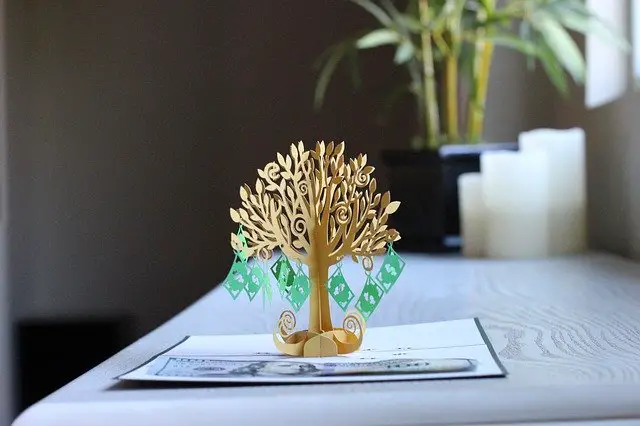Money Tree (what is money tree about)
In Chinese culture, money trees have a long and illustrious history and are frequently presented as gifts to people in order to bring them luck and wealth. These plants, which are frequently a type of feng shui plant, are thought to attract wealth and abundance. One example is the Crassula ovata, also known as the jade plant or money plant.
But what is a money tree precisely, and how did it come to be such a well-known and enduring representation of fortune?
The money tree has its roots in the ancient Chinese culture, when it was thought that some plants and other natural components had special powers and energies. Certain plants were believed to have particular advantages in feng shui, the concept of positioning things and elements in a way that is supposed to provide harmony and balance to a space.
One such plant that is popularly thought to draw money and abundance is the Crassula ovata, also known as the jade plant or money plant. In order to bring luck and wealth, this lovely and simple-to-care-for plant is frequently grown in residences and commercial establishments.
Money trees are frequently presented as presents for important events like birthdays, weddings, and graduations as a sign of luck and success. They are frequently given in a pretty pot or container, and additional symbolic presents, like red money envelopes, may be given along with them.
The money tree is a popular symbol of luck and prosperity, even though it isn't actually a tree that makes money. Many individuals think that taking care of and possessing a money tree will enhance their life and bring luck and good fortune.
The money tree is a well-known and enduring representation of luck and prosperity in Chinese culture, to sum up. A money tree may be a thoughtful and delightful gift for any occasion, whether you're hoping to attract good fortune into your life or you just want to admire the beauty of a feng shui plant.
In addition, The money tree has gained popularity as a decorative object and gift, as well as in contemporary popular culture. As a method to attract luck and good vibes into their lives, many people decide to install money trees at their homes or workplaces.
When it comes to taking care of their money trees, some individuals even go as far as to adhere to particular rituals or traditions. For instance, it is thought that scattering coins around the base of a money tree or watering it with coins will increase the tree's capacity to bestow luck and fortune.
The Braided Money Tree (Pachira aquatica), the Weeping Fig (Ficus benjamina), and the Bottle Tree are a few more plants that are occasionally referred to as "money trees" in addition to the conventional jade plant (Brachychiton rupestris). These plants each possess distinctive qualities and are said to offer various advantages and energies.
In conclusion, the money tree is a deeply ingrained part of Chinese culture and tradition that represents luck and riches. A money tree can add some luck and good vibes to your life, whether you decide to present one as a gift or display one in your own house or workplace.
If you find this valuable and useful, leave a comment below.
FOLLOW US ON OUR SOCIAL MEDIA;


:max_bytes(150000):strip_icc()/get-to-know-the-feng-shui-money-plant-1275013-2-590a8058ab314718a7c864cf164c00eb.jpg)

Comments
Post a Comment
Thank you for your comment ✨💫